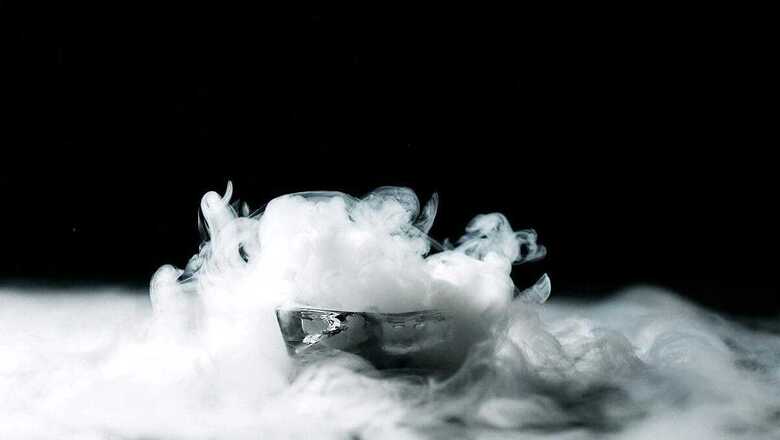
views
In a bizarre incident at a Gurugram restaurant on Monday, five diners underwent a harrowing experience when they inadvertently consumed dry ice. They began vomiting blood and reported cuts on their tongues after consuming a mouth freshener served to them, which was found to contain dry ice.
The video of the incident, which has been circulating on social media, captures the harrowing scene as the customers, all friends, scream in pain. Some can be seen desperately using ice and water to alleviate the burning sensation.
According to the police, four out of the five individuals have been admitted to the hospital.
5 hospitalised after consuming mouth freshener at Gurugram restaurant, owner booked@_anshuls speaks with the victims#Gurugram #DryIce #GurugramRestaurant pic.twitter.com/PHZdpYwGJJ— News18 (@CNNnews18) March 5, 2024
What is Dry Ice?
Dry ice is the solid form of carbon dioxide (CO2) that occurs at extremely low temperatures, approximately -78.5 degrees Celsius (-109.3 degrees Fahrenheit). It is widely employed to generate dramatic fog effects at events and to preserve medical, food, and beverages during transportation. The accidental ingestion of dry ice poses significant health risks that are frequently underestimated.
“Due to its sublimation property, which enables it to transition straight from a solid to a gas without going through a liquid phase unlike regular ice, it is frequently used for freezing and cooling,” Dr Rajeev Gupta, director, internal medicine, CK Birla Hospital (R), Delhi, told The Indian Express.
Health Risks Associated with Dry Ice- Experts Take
According to Dr. Gupta, dry ice’s low temperature can cause frostbite or cold burns if it touches the skin.
In terms of health effects, the main concern with dry ice is the release of carbon dioxide gas. Dr. Manjusha Agarwal, senior consultant in internal medicine at Global Hospitals Parel Mumbai, explains, “When dry ice turns into carbon dioxide, it can replace oxygen in enclosed spaces. In places with poor ventilation, the buildup of carbon dioxide can lead to a lack of oxygen, risking asphyxiation.”
Inhaling large amounts of carbon dioxide gas released by sublimating dry ice in a small area can result in dizziness and respiratory problems. Dr. Gupta also emphasises the importance of using dry ice in well-ventilated spaces and handling it with insulated gloves or tongs to avoid skin contact.
Additionally, exposure to dry ice or its vapor can cause eye irritation, leading to redness, tearing, and discomfort, warns Dr. Dipak Patade, consultant physician at Adhikari Lifeline Multispecialty Hospital, Palghar.
Swallowing dry ice is much riskier than holding it. Dr. Ranga Santosh Kumar, consultant physician at Yashoda Hospitals, Hyderabad, explains, “Dry ice can freeze tissue in your mouth, esophagus, and stomach.”
Dr. Kumar highlights a significant danger when people attempt to “smoke” dry ice by placing a small piece in their mouths to blow a puff of smoke. “Although professional entertainers and teachers may perform this demonstration, there is a real risk of accidentally swallowing the piece of dry ice,” Dr. Kumar added.
Treatment
Individuals who accidentally consume dry ice are strongly advised to seek immediate medical attention. Medical professionals may employ various strategies to alleviate the effects, such as providing pain relief for frostbite injuries, monitoring for signs of gastric perforation, and offering respiratory support as needed.
Preventive Measures
Numerous speciality restaurants utilise dry ice for food preservation and presentation. To prevent accidental ingestion, it is crucial to adhere to proper storage practices, handle dry ice with protective gear, and ensure its separation from food and beverages intended for consumption.




















Comments
0 comment